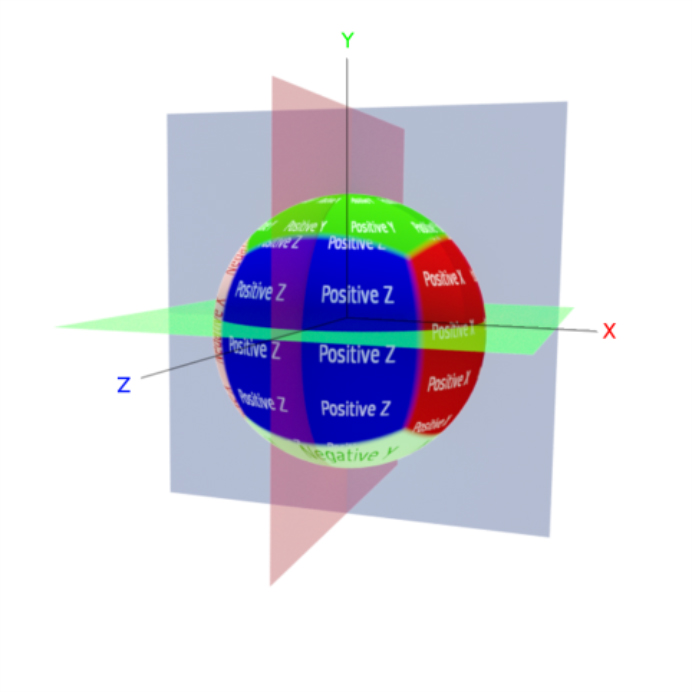
The Triplanar map provides a quick way to map a texture or set of textures on any object, and allows texture transforms that are local to each projection axis. The Triplanar map has six input pins representing the positive and negative X, Y, and Z planes. The same or different Texture nodes can map to each of these input pins (figure 1).

Figure 1: Two RGB Image nodes connected to a Triplanar map's six input pins
This Texture maps the samples of multiple TexturesTextures are used to add details to a surface. Textures can be procedural or imported raster files. along three planes - x, y, and z - in world space or object space coordinates, and blends them to create one seamless Texture. In most cases, and depending on the complexity of the model, you can map Textures without having a UV-mapped Mesh.

Figure 2: Triplanar projections
Blend Angle - Sets the angle on each edge to linearly blend adjacent textures.
Coordinate Space - Determines the coordinate space used when blending.
Blend Cube Transform - Provides various transformation types to control the blended texture's orientation.
Positive/Negative X Axis Texture - Specifies the texture to blend on the positive and negative X-axis. The positive and negative textures can be different.
Positive/Negative Y Axis Texture - Specifies the texture to blend on the positive and negative Y-axis. The positive and negative textures can be different.
Positive/Negative Z Axis Texture - Specifies the texture to blend on the positive and negative Z-axis. The positive and negative textures can be different.